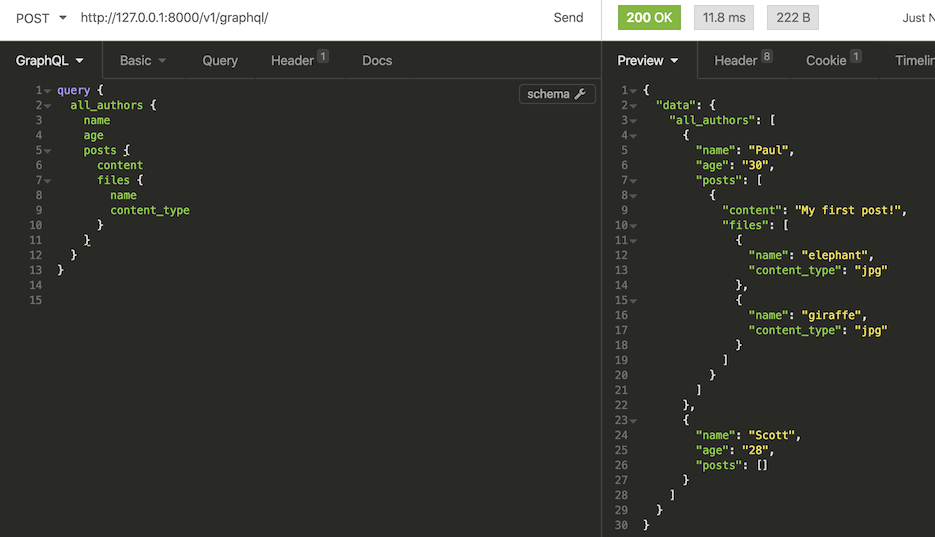

So, let’s say you write a cart component that uses the following query to fetch all the data in your cart: query cartDetails($cartId: String!) ) įinally, we now can navigate back to our cart and refresh to see if this solves our problem:Īnd it did! There we have it, a simple reusable way of adding an Introspection Fragment Matcher to your GraphQL client that will be automatically updated with every build.

The repo queries remain the same since they need only refer to the fragment name. Fragments can be nested inside fragments, but no cycles are allowed in. Fragments allow for the reuse of common repeated selections of fields, reducing duplicated text in the DQL documents.
#Graphql fragments update
With fragments, your application only needs to update the fieldset in one place. The fragment keyword lets you define new fragments that can be referenced in a query, per the Fragments section of the GraphQL specification. Take for example a simple e-commerce web application that uses Magento as your e-commerce platform and the front-end is written using React. Without GraphQL fragments, that means rebuilding the entire query string for each repository based on the user’s selections.
#Graphql fragments how to
However, the fix is quite simple and below details step by step how to fix this problem. A GraphQL fragment is a subset of fields from an object type that you can reuse and share between multiple GraphQL operations. While fragments can be powerful, there is a common mistake made by many front-end developers when it comes to handling queries with unions and interfaces: They are using the simple (heuristic) fragment matcher. Fragments are a very powerful and useful feature in GraphQL, and if you do not know what fragments are you can read more here. Since GraphQL prioritizes speed and ease of setup, there are some features that you will need to pass to your GraphQL client in order to use certain attributes in your query. By utilizing the query function, we can receive data stored remotely through a JSON-like structure. GraphQL Fragments for Recursive Query As per our example we have a GraphQL object definition called Category and our category object can have children categories and those children could have children. Think of it as expanded in place similar to C style macros (sorry if that anology doesnt help).GraphQL helps empower the front-end developer to be able to retrieve data from a single endpoint with ease. Apollo Kotlin supports both forms of GraphQL fragments: Named fragments, which enable you to reuse a set of fields across multiple operations. For the responseBased codegen, see this page.
#Graphql fragments code
And the code on our components become smaller, which is also great for frontend devs. They dont depend on implementation but interface of data source and type. Switch back to aphql, insert newline, delete newline, and then save aphql. Insert newline, delete newline, and then save aphql. Even with build time checks, the server also checks the query and rejects invalid queries at runtime.Īs for your question about a fragment, that is defined in the client as a reusuable query that can be included in other quesiers. Note: This article describes the behavior of fragments when using the default operationBased codegen in Apollo Kotlin. ExchangeRates and ExchangeRateItem dont know how to fetch data. Open document that defines fragments (aphql) in same instance of editor+lsp. How the server schema is obtained and the code generations from the query are handled are implementation specific, but the idea is the same regardless. Ti sao Fragment li là mt khái nim rt 'cool' trong GraphQL. You clients then define queries against that graph.Ĭlients can validate their queries at build time by taking the server schema and ensuring queries would match. You define you graph in many parts if you like.


 0 kommentar(er)
0 kommentar(er)
